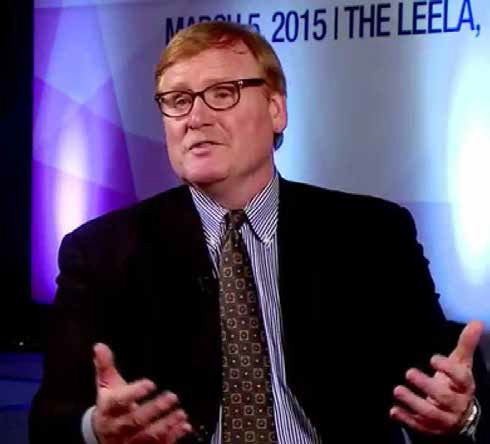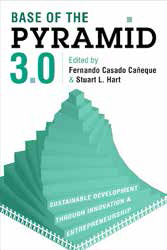
Since the original publication of my article with C.K. Prahalad, “The Fortune at the Bottom of the Pyramid,” in 2002, the theory and practice of “BoP” business has taken off. Literally thousands of new corporate initiatives,
start-up ventures, development institution programs, and innovative investment funds focused on social impact have exploded onto the scene. A whole new lexicon has emerged to describe this phenomenon, including new buzzwords and catch phrases like: “inclusive business,” “opportunities for the majority,” “sustainable livelihoods,” “pro-poor business,” and “social business.” The number of conferences and summits dedicated to the premise that business and entrepreneurship (rather than just aid and philanthropy) can be brought to bear to alleviate poverty has skyrocketed. And literally thousands of books, articles, newsletters and blogs addressing this topic have appeared on the scene.
Yet despite all this activity and attention, there is still the nagging sense that we have not yet cracked the code when it comes to BoP business. The unfortunate truth is that most BoP ventures and corporate initiatives over the past decade have either failed outright, or achieved only modest success at great cost. As a consequence, a growing number of companies now simply assigned this activity to their CSR department or corporate foundation.
Such lack of traction can be explained in part by the incremental approach taken by many BoP ventures and corporate initiatives. Indeed, I and several of my colleagues have drawn a distinction between “BoP 1.0” and “BoP 2.0.” The former, which has been the dominant approach to date, focuses on adapting existing products, reducing price points and extending distribution to previously underserved or unserved customers, often with NGO partners to compensate for the lack of prior experience.
And while such “business model innovation” is necessary, it has proven less than sufficient, since most such “outside-in” initiatives have been commercial failures. I liken BoP 1.0 to the proverbial “child with a hammer”—give a child a hammer and everything looks like a nail. Corporations know how to swing their existing hammer and lower income “consumers” look like a lot of new (albeit smaller) nails. Some have even suggested that this approach is nothing more than the latest form of corporate imperialism.
Over the past decade, BoP 2.0 has been advanced as a way to overcome many the problems of simply “selling to the poor.” The 2.0 approach stresses the importance of co-creating products and compelling value propositions with underserved communities, innovating from the bottom-up, leapfrogging to environmentally sustainable technology, and creating a dedicated set of metrics and timelines suited to the unique features of the underserved space. If the BoP 1.0 model can be summarized as “finding a fortune at the BoP” (premised on the logic of tapping into existing, albeit underserved, markets) then BoP 2.0 can be characterized as “creating a fortune with the BoP” (premised on the logic of creating entirely new markets). Indeed, my earlier book with Ted London(Next Generation Business Strategies for the Base of the Pyramid) makes exactly this point.
The BoP Global Network has been dedicated to building the theory and accelerating the practice of BoP business—enterprise that is inclusive, culturally embedded, environmentally sustainable, and profitable. Members of the network have contributed in significant ways over the past several years to moving us toward BoP 2.0. And while we are still in the midst of developing the new skills, capabilities, and organizational routines necessary to execute BoP 2.0, additional challenges, complexities and opportunities are being revealed. Indeed, only by taking action does one uncover the shortcomings in the approach taken. As expected, BoP 2.0 is clearly not the end of the road. It is therefore time to press forward, toward a BoP 3.0.
This book contains contributions from members of the BoP Global Network that help stretch our thinking and point us toward BoP 3.0. How does BoP 3.0 differ from 2.0? In this book, you will find the following themes and “stretch” ideas:
From Protected Space to Purpose and Mindset
BoP 2.0 stressed the importance of creating protected organizational “white space” in companies to give new BoP initiatives the time and space for creative cocreation and embedding. While important, creating protected organizational space is necessary but probably not sufficient. Looking ahead, it will become increasingly important to consider BoP ventures in the context of the larger corporation, particularly its core purpose and ambition, as revealed by past behavior. Not all companies are equally suited to pursue BoP and strategies (and effectiveness) will vary depending on the company’s true purpose, mindset, and level of ambition. Section 1 of this book addresses these new challenges.
From Co-creation to Open Innovation
BoP 2.0 revealed the importance of co-creating solutions from the bottom up in partnership with the poor, rather than simply marketing low-cost products from the top down. We are still in the early stages of acquiring the skills necessary for effective cocreation and mutual value creation. Looking ahead, however, open innovation may represent a whole new arena for BoP innovation, drawing on the “wisdom of the crowd” to spawn previously unimagined solutions. Indeed, participatory grassroots innovations may take BoP business to a whole new level in the years ahead. Section 2 of this book points us toward these new opportunities.
From Stand Alone to Innovation Ecosystem
BoP 2.0 clearly recognized the importance of engagement, particularly with those in the underserved community itself. However, BoP 2.0 still tended to view the business as an island unto itself—with success or failure driven by the venture’s strategy, price point, business model, or value proposition. Looking ahead, it is becoming
increasingly clear that for BoP ventures and initiatives to succeed, they will need to be
embedded in a larger innovation ecosystem, including potential technology providers, funders, capacity builders, on-the-ground partners, and supply chain players. Too often, good ideas have floundered because of missing puzzle pieces of the BoP innovation ecosystem. Section 3 of this book focuses on this larger systemic need.
From Extended Distribution to Innovation for the Last Mile
BoP 2.0 understood the challenge of gaining effective distribution in dangerous slums or more sparsely populated rural areas, including the high costs associated with dedicated downstream channels for single products or narrow value propositions. Indeed, the last decade is littered with the failed remains of BoP ventures with cost structures that simply could not produce the competitive returns. Looking ahead, more collaborative and creative approaches may be necessary to crack he code on distribution, including wider bandwidth value propositions and sharing channels with other complementary partners and players. Section 4 of this book explores this new horizon.
 From NGO Engagement to Cross Sector Partnership Networks
From NGO Engagement to Cross Sector Partnership Networks
BoP 2.0 paid considerable attention to the importance of partnering with NGOs and other key on-the-ground players especially in geographies where the company itself may have limited experience. In fact, many BoP ventures have effectively “outsourced” their customer facing functions to NGO partners embedded in the underserved space. Looking ahead, more sophisticated and complex partnership networks, including NGOs, governments, and academic partners may be key to BoP business success. Section 5 of this book looks at models for such multi-sector partnerships.
From Poverty Alleviation to Sustainable Development
The original motivation for BoP business was using the power of enterprise to serve the poor, create livelihoods, and alleviate poverty. Looking ahead,the importance of integrating both environmental sustainability and an integrated (triple bottom line) perspective into the BoP space may prove critical. Potential even exists to use BoP business logic to incubate new models to better serve and include the underserved populations in the developed world. Section 6 of this book examines some emerging models for enabling sustainable development.










